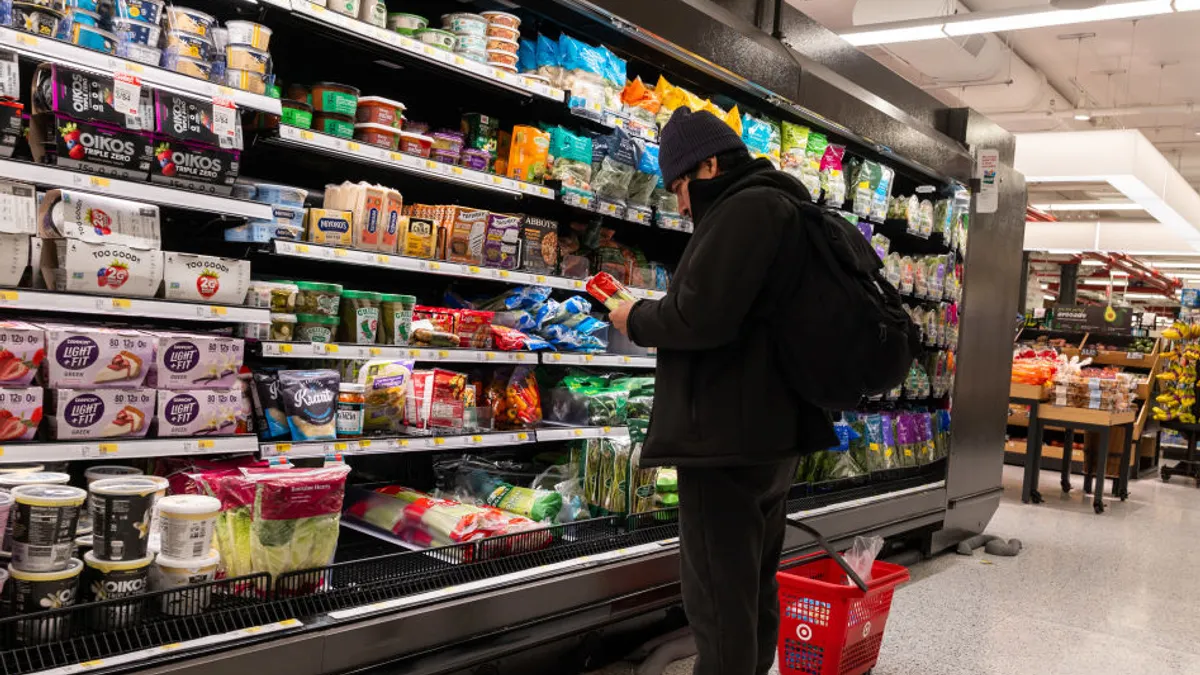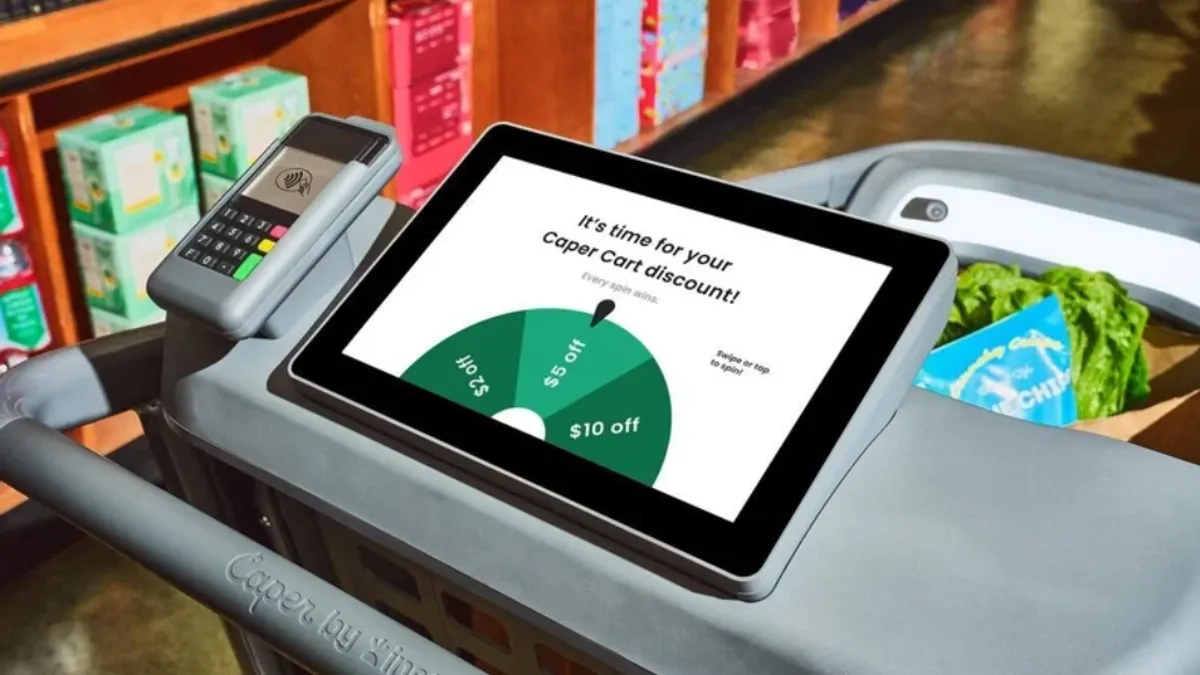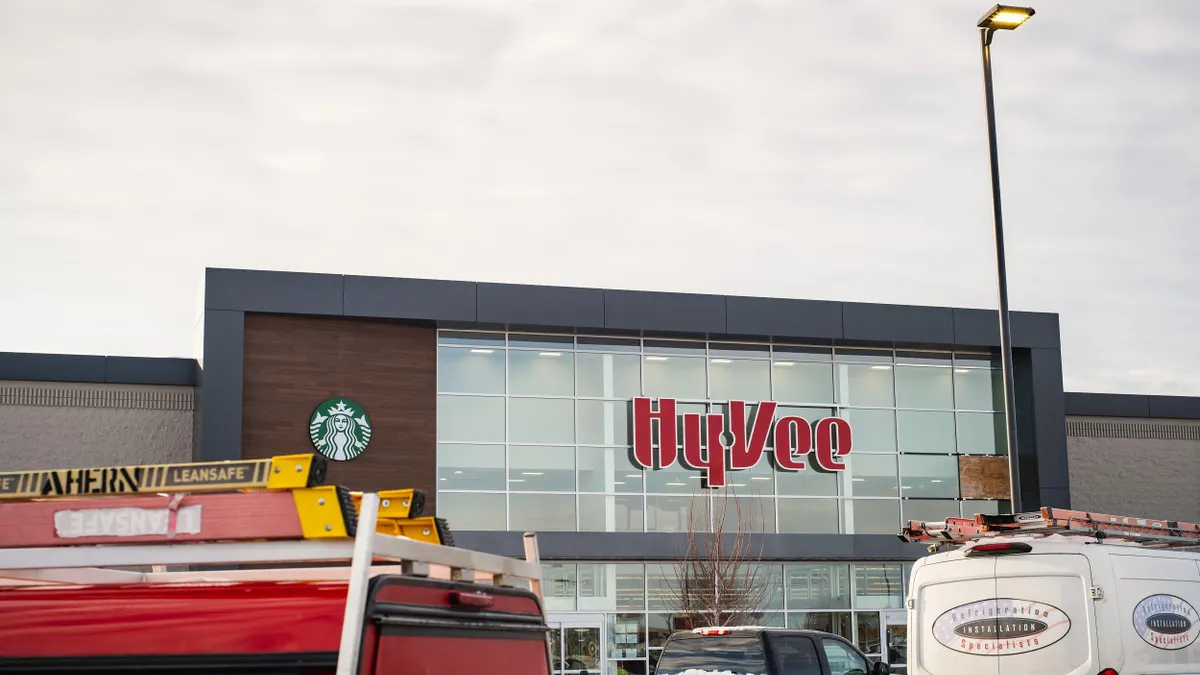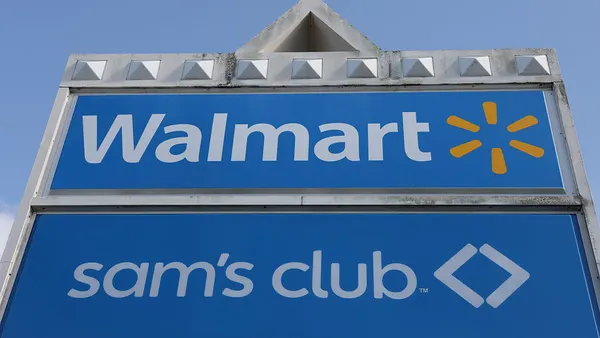Grocers today face a multitude of challenges, from staffing and merchandising to expanding e-commerce and boosting the in-store experience. At Groceryshop in Las Vegas, it was apparent that many companies see technology as a way to address their existing challenges and strengthen their competitive edge.
Looking for a shoppable recipe platform to partner with? There were several. Need to cut down on cleaning staff? There's a robot for that. Although numerous experts cautioned retailers against chasing "shiny objects," it was hard not to marvel at some of the innovations on display during two days at the show.
RightPick from RightHand Robotics
Retailers are quickly automating various aspects of e-commerce fulfillment, but when it comes to picking products out of bins and assembling orders, human workers are still a necessity. RightHand Robotics promises to close the loop with robots that can pick and place individual items without damaging them.
The company's RightPick bot, which was moving products from one bin to another for hours on end at Groceryshop, relies on a suction tool and grabbing mechanism that applies just the right amount of pressure to carefully move products.
The upfront cost of robotics can be a hard pill for retailers to swallow. But according to Leif Jentoft, co-founder of RightHand Robotics, relying on humans to pick for e-commerce orders can be even more costly. For example, an employee who is cart-picking may move 150 items per order, and at $15 an hour, that means every item the person picks costs about 10 cents to fulfill. A robot requires a one-time investment and can work far more effectively and efficiently, he said.
Aira from AT&T
About 3% of U.S. adults, or more than 3.4 million people, are legally blind or visually impaired, according to the Centers for Disease Control. More than 17% of people over age 65 report having trouble with their vision.
With Aira, AT&T is using wearable technology and a mobile app to improve the in-store experience for these shoppers. Through tech-enabled glasses or the Aira mobile app, customers can speak directly to trained professionals who will be able to see the person’s surroundings through a camera and help guide them through their shopping trip.
There are no infrastructure or maintenance costs associated with the technology, though retailers have to set up a contract with Aira to establish their stores as a location with Aira access for shoppers.
Pensa Systems' inventory drone
When it comes to inventory management, grocers have shown they're willing to turn work over to the robots. For as effective and efficient as Tally, Marty and the gang claim to be, though, they're also expensive. Pensa Systems says it can perform the same shelf-minding tasks for a fraction of the cost using autonomous, computer-vision enabled drones.
The machines, which resemble a bunch of flying whiffle balls, zip around the store checking for out-of-stocks and delivering inventory reports. According to founder Richard Schwartz, the drone's ability to move in all directions helps its camera better identify products and empty spaces on shelves. It can also see through cooler doors.
Putting drones inside a store filled with shoppers sounds like a recipe for disaster. But Schwartz said the drones are designed to find empty spaces inside the store, drop down and take quick readings. If a customer tries to approach one, it lifts up out of reach.
Robomart
Robomart is a driverless vehicle stocked with fresh grocery items that customers will be able to summon with a tap. The autonomous vehicle will arrive in minutes, and shoppers can select their items and receive automatic checkout.
While most e-commerce platforms focus on building large baskets, Robomart is made for small orders and fill-in trips. The vehicle, which travels local roads at about 25 miles per hour, includes a curated assortment determined by the retailer using it.
"We're essentially creating a new channel," Ahmed told Grocery Dive.
Also unlike home delivery and other e-commerce channels, Robomart allows people to see and feel their own fresh items before they buy. The company is working on getting road-ready for its Stop & Shop partnership in Boston, and has recently signed another soon-to-be-announced customer, Ahmed said.
Veeve's smart cart
Although they didn't work on the e-tailer's famed Go store project, former Amazon engineers Umer Sadiq and Shariq Siddiqui are very familiar with just-walk-out technology. But when they left the company, the two didn't set out to replicate the futuristic store. They wanted to put the store inside a shopping cart.
Veeve's smart carts use computer vision and finely calibrated scales to identify products placed inside — and taken out of — the basket. If the system fails to register a product, shoppers can always scan the barcode. The carts are made of composite materials and weigh less than a traditional grocery cart, making them a breeze to push around. Trip the system's audit alert, though, and the cart's handle light turns red and the wheels lock down, making it impossible to move.
Veeve carts are highly personalized. Customers check in with the cart by scanning a QR code or their loyalty card. The cart can direct shoppers to products throughout the store, and offer personalized promotions based on their location.
The company, which just came out of stealth, is currently testing with an undisclosed grocer in the Seattle area.






















